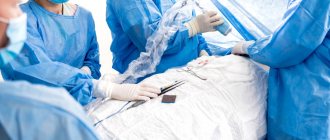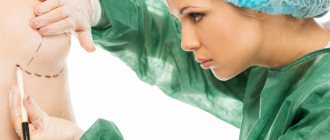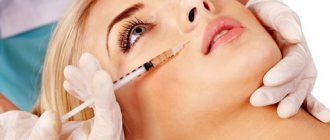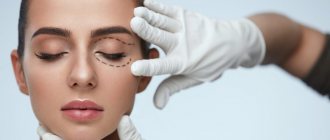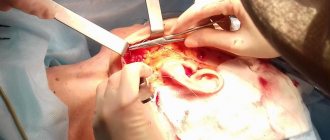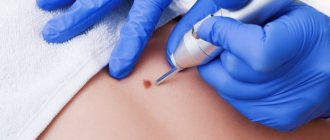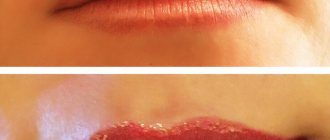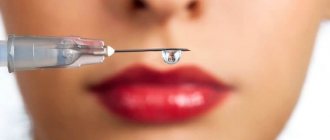After removal of the fibroadenoma, you can breathe a sigh of relief and live without fear; breast cancer has not been detected. Fibroadenoma is benign, but until it is removed, even the most modern diagnostic methods cannot reliably guarantee the absence of cancer.
- What is fibroadenoma?
- Treatment of fibroadenoma
- Caring for sutures after fibroadenoma removal
Lymphatic System Information
Figure 1. Normal lymph drainage
The lymphatic system performs 2 functions:
- helps fight infections;
- promotes the outflow of fluid from different parts of the body.
Your lymphatic system is made up of lymph nodes, lymphatic vessels, and lymphatic fluid (see Figure 1).
- Lymph nodes are small, bean-shaped glands located along the lymphatic vessels. Your lymph nodes filter lymph fluid, trapping bacteria, viruses, cancer cells, and waste products.
- Lymphatic vessels are tiny tubes, like blood vessels, that carry fluid to and from the lymph nodes.
- Lymphatic fluid is a clear fluid that moves through the lymphatic system. It transports cells that help fight infections and other diseases.
The axillary lymph nodes are a group of lymph nodes in the axilla (armpit) that drain lymph fluid away from the breast and arm. The number of axillary lymph nodes is different for everyone. Axillary lymph node removal is an operation to remove a group of such nodes.
to come back to the beginning
About lymphedema
Sometimes, as a result of the removal of lymph nodes, it becomes difficult for the lymphatic system to cope with the removal of fluid. In this case, lymph fluid may accumulate where the lymph nodes were removed. This excess fluid causes swelling called lymphedema.
Lymphedema may develop in the arm, hand, breast, or torso on the treated side (the side where the lymph nodes were removed).
Signs of Lymphedema
Lymphedema can develop suddenly or gradually. This may happen months or years after surgery.
Watch for the following symptoms of lymphedema in the arm, hand, breast, and torso on the treated side:
- Feeling of heaviness, pain, or aches
- Feeling of skin tightness
- Decreased flexibility
- swelling;
- Changes in the skin, such as tightness or indentations (where pressure marks are left on the skin)
If you experience swelling, you may notice the following:
- the veins on the hand affected by treatment are less noticeable than on the other hand;
- rings on the finger(s) of the affected hand are tighter or do not fit;
- the shirt sleeve on the treated side fits tighter than usual.
If you have any signs of lymphedema or are unsure, call your healthcare provider.
to come back to the beginning
Introduction
The concept of “quality of life” for cancer patients has significantly changed the technique of surgical operations in patients with breast cancer. The likelihood of obtaining a negative result, from a cosmetic point of view, after performing organ-conserving surgery, before the introduction of the concept of quality of life into oncology, was as common as performing a mastectomy. Therefore, the search for the most optimal solution that would combine oncological principles and an understanding of the integrity of the organ led to the development of oncoplastic surgery, which allows, without neglecting the basic principles of oncology, to perform not only gentle treatment, but also to preserve the organ (breast) in its original form, which was before performing the operation. There are two fundamental principles that are important for obtaining a good result, in every sense of the word: 1) choosing the correct technique for tumor resection; 2) correction of the contralateral mammary gland. All this requires careful planning of the operation, taking into account the most cosmetic location of the scars and the convenience of dissection. However, even despite the choice of the most appropriate method of surgical treatment in a particular case, the aesthetic result of the operation depends on many different factors, such as the location and size of the defect, as well as the size of the original mammary gland. In addition, there is a generally accepted opinion that the best closure of the surgical defect is possible immediately after tumor resection. This is due to the fact that correction of already healed soft tissue defects, especially after radiation therapy, is a more complex task.
Today, one of the most common surgical operations in patients with breast cancer remains organ-preserving, in its various modifications: quadrantectomy, lumpectomy. Great progress has been the introduction into surgical practice of organ-preserving operations based on simple volume replacement. All of these techniques rely on advancement, rotation, or transfer of a section of breast tissue to fill the created defect. A simple version of these methods of closing the defect involves mobilizing breast tissue along the periphery of the resection zone.
However, with all due respect and the revolutionary approach to this type of surgical operations that were introduced in the last century, in the 21st century there are significantly more requirements for organ-preserving surgery than before. Preserving the organ in our time is not the only task. Modern requirements for organ-preserving surgery also include obtaining an optimal cosmetic result. And such results are achieved by introducing a plastic component to standard organ-preserving surgery.
Analysis of the characteristics of tumor localization, breast volume, tumor size, the relationship of these data, a fresh look at the problem will allow you to make the right decision in planning breast-conserving surgery. However, often it is not only a competent analysis that leads to an optimal final result, but also knowledge of various techniques for working with breast tissue.
A difficult problem from the point of view of obtaining a good cosmetic result is the localization of the tumor in the upper inner quadrant. The reason for this is due to the lack of tissue in this quadrant, the proximity of fixed anatomical structures, and poor filling of the upper pole. The desire to solve this problem forced us to review methods for breast reconstruction using local flaps. In general, all techniques involve rotation or movement of a flap consisting of skin and fatty tissue of the lateral surface of the chest wall to the defect area. However, most local flaps are not axial flow flaps, and the blood supply to the distal part is difficult to predict. Therefore, the technique we found in the literature with moving a “no name flap” that has axial blood flow is the operation of choice when the tumor is localized in the upper-inner quadrant.
Reducing the risk of developing lymphedema
It is important to prevent infection and swelling to reduce the risk of lymphedema.
Preventing the development of infection
You may be more likely to develop lymphedema if your affected arm becomes infected. This occurs because your body will produce extra white blood cells and lymph fluid to fight the infection, and this fluid will not be eliminated properly.
Follow these recommendations to reduce your risk of developing an infection.
- Beware of sunburn. Use a sunscreen with an SPF of at least 30. Apply it as often as possible.
- Use insect repellent to prevent insect bites.
- Use lotion or cream daily to protect the skin of your affected arm and hand.
- Do not trim the cuticles on the affected arm. Instead, gently push it back with a cuticle stick.
- Wear protective gloves when doing yard or garden work, washing dishes, or using strong detergents or wire wool.
- Wear a thimble while sewing.
- Be careful when shaving the armpit area of the affected arm. It may be better to use an electric razor. If you get a cut while shaving, treat it using the instructions below.
If you notice any signs of infection (such as redness, swelling, warmer-than-usual skin in the area, or tenderness), call your healthcare provider.
Caring for cuts and scrapes
- Wash the area with soap and water.
- Apply an antibiotic ointment such as Bacitracin® or Neosporin®.
- Apply a bandage such as Band-Aid®.
Burn care
- Apply a cold compress to the affected area or place it under cool tap water for about 10 minutes.
- Wash the area with soap and water.
- Apply a bandage such as Band-Aid.
- Prevention of edema
Immediately after surgery
Some swelling after surgery is normal. This swelling can last up to 6 weeks, but it is temporary and will gradually disappear. After surgery, you may also experience pain and other sensations, such as tingling and pinching. Follow these guidelines to help relieve swelling after surgery.
- Do the exercises 5 times a day. If your healthcare provider tells you to do this less often or more often, follow their recommendations.
- Continue training until normal range of motion in your shoulder and arm is restored. This may take 4-6 weeks after surgery. If you feel a tightness in your chest or arm, it may be helpful to continue stretching for even longer periods of time.
- If normal range of motion does not return after 4 to 6 weeks, call your healthcare provider.
Long-term perspective
Doing the following may help reduce your risk of developing lymphedema.
- Ask your healthcare team to draw blood samples, give injections (shots), give intravenous (IV) lines, and take blood pressure in the unaffected arm. In some situations, if blood cannot be drawn from an unaffected arm, the treated arm may be used. Your healthcare provider can tell you about them.
- If you cannot inject into an unaffected arm, gluteal muscle, thigh, or abdomen (belly), you can inject into an unaffected arm.
- If blood pressure cannot be measured in the unaffected arm, the treated arm can be used.
- If lymph nodes were removed on both sides, talk to your healthcare provider about which arm is safest to use.
- When resuming exercise and daily activities, do so slowly and gradually. If you feel discomfort, stop and take a break. Exercises shouldn't hurt.
to come back to the beginning
When should you contact your healthcare provider?
Call your healthcare provider if you have the following symptoms:
- any part of the arm, hand, breast or torso on the treated side becomes: hot to the touch;
- red;
- more painful;
- more swollen
to come back to the beginning
Symptoms of mastitis in women
Mastitis, which develops in lactating women, is a complication of milk stagnation. Pathology most often occurs in the first month after the birth of a child. For the formation of lactostasis, it is necessary that milk accumulates in one or more lobes of the mammary gland, and the excretory duct is blocked. This condition occurs under the influence of the following factors:
- underwear that is too thick;
- improper attachment of the baby to the breast;
- nipple cracks;
- disturbance of the rhythm of feeding;
- hormonal causes – oxytocin deficiency;
- very large breasts;
- hypothermia of the mammary gland;
- injury.
Women who had mastopathy before pregnancy are more likely to encounter mastitis. At the same time, connective tissue grows in the chest, which deforms or blocks the ducts.
At first, the woman feels pain, a feeling of fullness in the chest. Usually on one side. The general condition does not suffer with lactostasis. If the disease enters the mastitis phase, body temperature rises, headache, weakness, nausea occur and appetite worsens. Then a clear focus appears with pronounced redness and tension of the skin, dense to the touch, with a doughy consistency.
